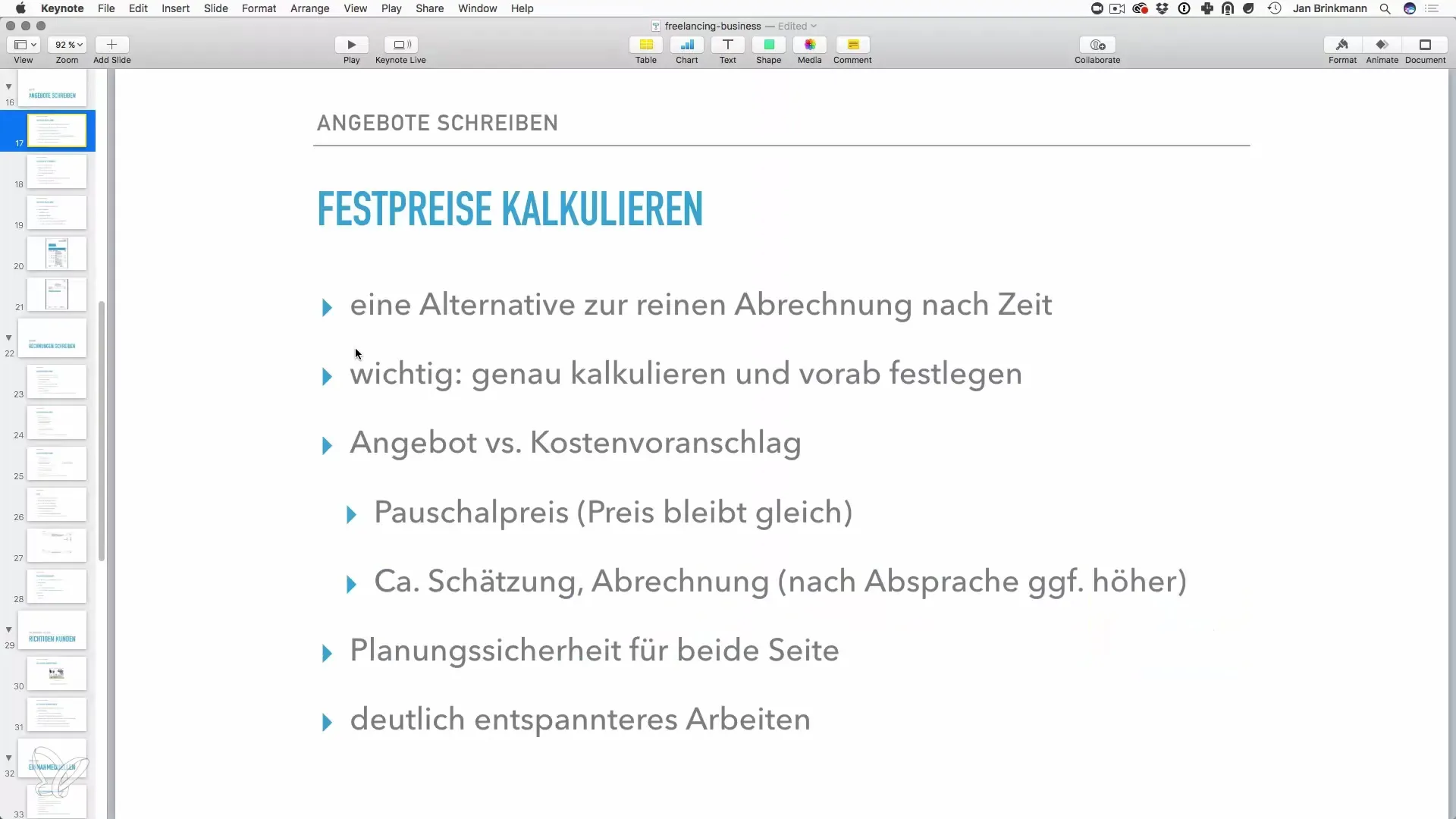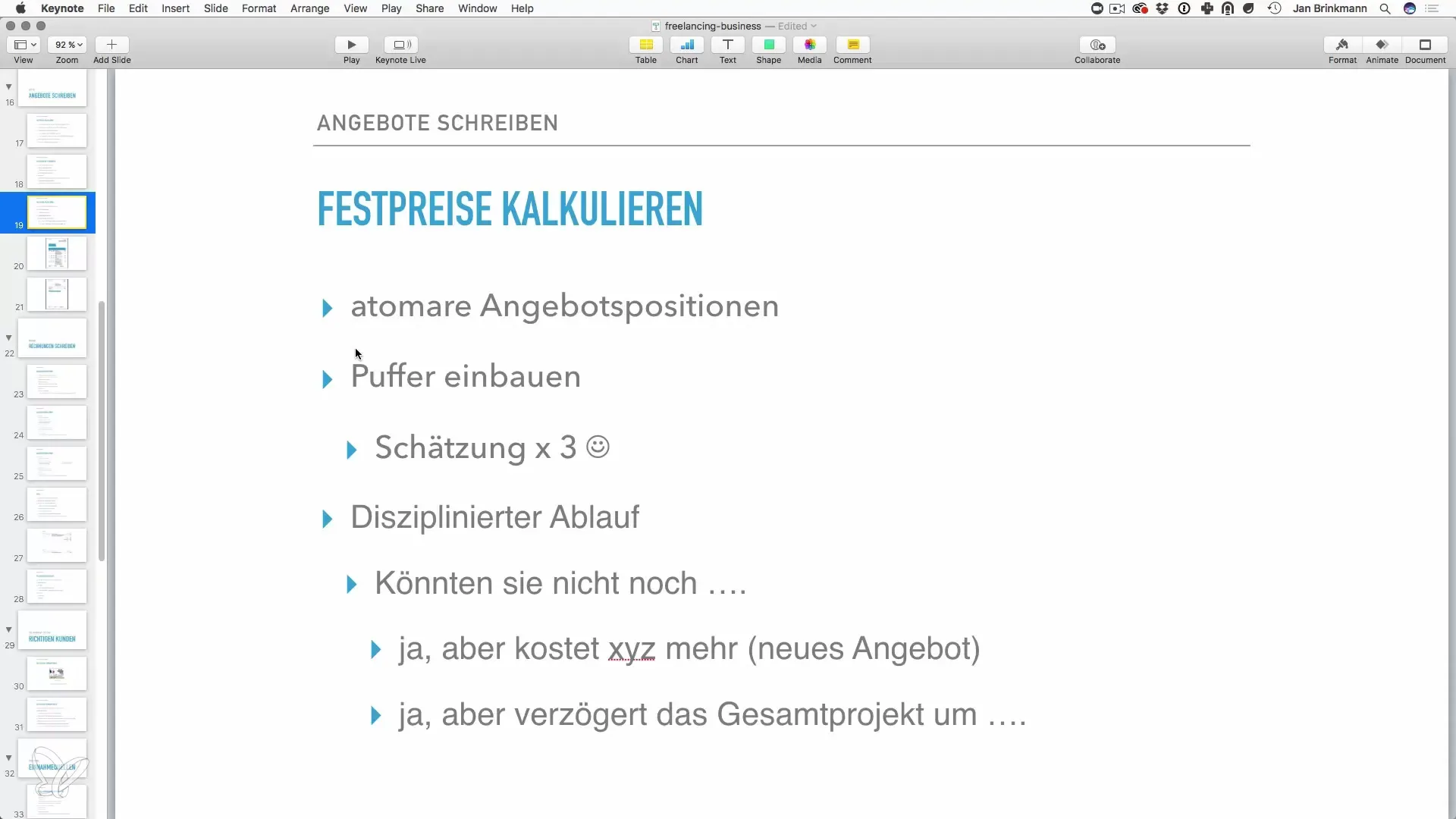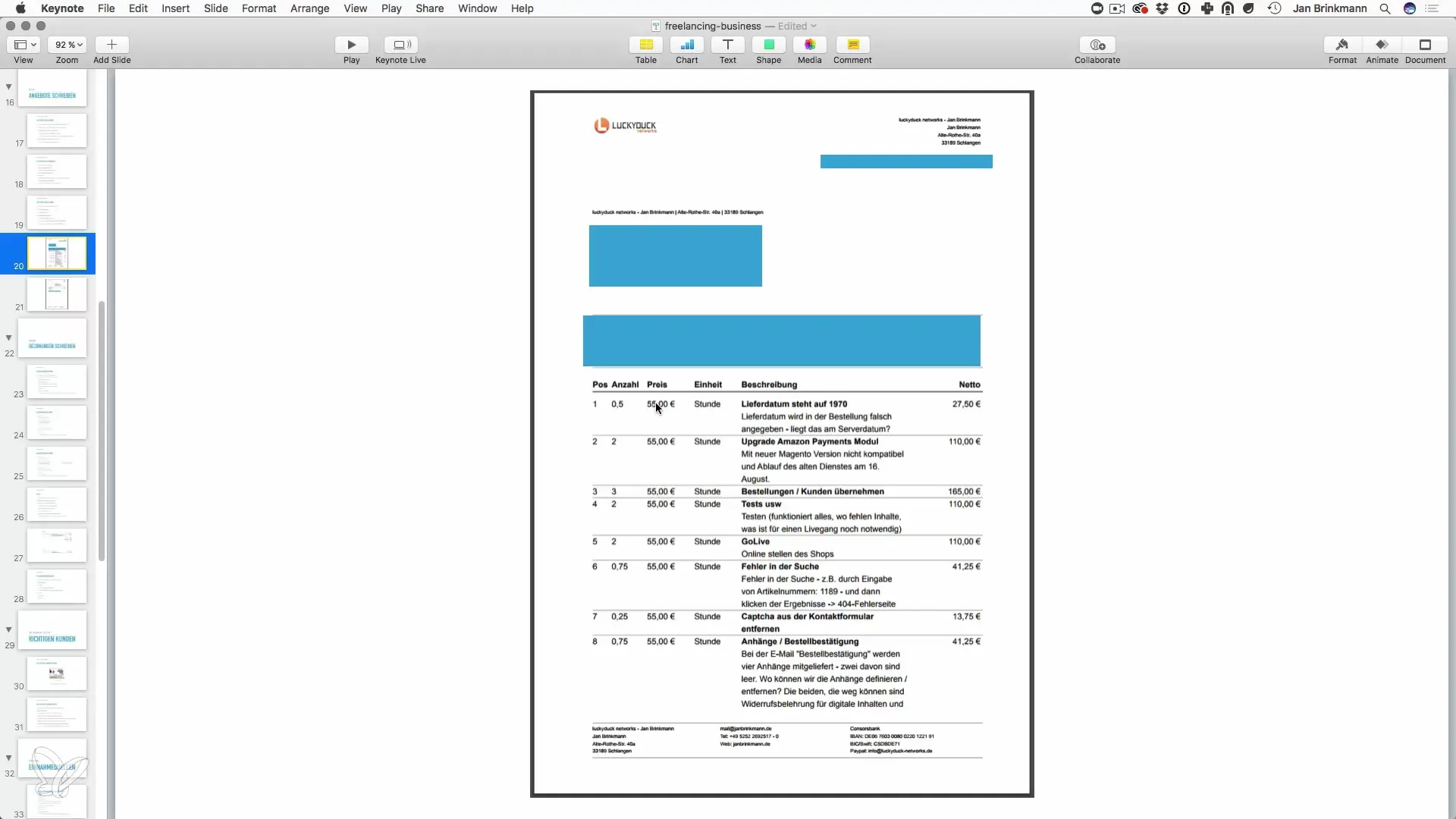A compelling offer can be the key to new customers. As a freelancer, you not only offer your services but also communicate to your potential clients what they can expect for their money. When writing an offer, it is crucial that you present the necessary information in a structured and precise manner. In this guide, I will show you how to write an effective offer that meets your clients' needs and improves your chances of winning a contract.
Key Insights
- Fixed prices provide planning certainty.
- detailed breakdown of services increases transparency.
- Discipline in project execution is crucial.
- Optional additional services can fulfill customer wishes.
Step-by-Step Guide
Step 1: Clarify and Calculate Requirements
Before you start writting the offer, it is essential to know all the requirements of the project precisely. Have a detailed conversation with the client to clarify the goals, scope, and specific requirements. Write down everything important and make sure you have all the information necessary to realistically assess the effort involved.

With this information, you can create a solid calculation of the time and resources needed. Think about how long you would need for each work package. The more accurately you work here, the more precise your offer will be.
Step 2: Fixed Price vs. Estimate
Decide whether you want to offer a fixed price or an estimate. A fixed price gives the client planning certainty, as they already know in advance how much the service will cost – regardless of whether you ultimately need more or less time.
In the case of an estimate, it is a projection that can potentially exceed by up to 20% without you facing legal issues. However, this can lead to misunderstandings, which is why I personally prefer to work with fixed prices when the project requirements are clear to me.
Step 3: Detailed Breakdown of Services
An effective offer should clearly list all required services. Break down the project into individual work packages and specify how much time and effort each of these tasks requires. This could look like this:
- Basic installation: 2 hours
- Module integration: 1 hour
- Configuration: 1 hour
- Additional programming: 3 hours
This detailed listing helps the client understand where the price comes from.

Step 4: Plan for Buffers
It is important to also include a buffer in the offer. When estimating the effort, it is advisable to increase the estimated time by a certain percentage to account for unforeseen complications. This helps you better respond to changes in the course of the project.

Step 5: Set the Price Level
After calculating the effort, it’s time to set the price. Even if you use an hourly rate, it is often helpful to show when breaking down the offer how the total amount is made up. When the client sees that each hour is accounted for, they have more confidence in your offer.
Step 6: Optional Services Offered
Add optional services to your offer that the client can take advantage of if needed. For example, monthly support for security updates or additional features. Such optional offers give the client the freedom to adjust the offer according to their financial capabilities and priorities.
Step 7: Clear Communication and Deadlines
Once your offer is completed, communicate clearly and understandably. Be sure to specify deadlines for feedback and the start date of the project. In many cases, clients have additional wishes or ideas they would like to integrate into the project. Make it clear that changes to the original offer may involve additional effort and inform them of possible impacts on the deadlines.
Step 8: Documentation and Follow-Up
Ensure that your offer is documented and that the client can easily accept or decline it. You could send the offer in a PDF document that the client can sign. Then wait for feedback and be ready to negotiate various points if the client has questions or concerns.
Summary - Writing Offers: Effectively Attracting New Clients as a Freelancer
Creating a compelling offer requires accuracy and clear communication about project requirements. It is important to set the price, provide transparent breakdowns, and offer optional additional services. Always ensure to give the client the planning certainty they need. This not only increases your chances of winning a contract but also builds trust.
Frequently Asked Questions
What is the difference between a fixed price and an estimate?A fixed price is a fixed amount that the client has to pay. An estimate is an approximation with a certain range of fluctuation.
Why is a detailed breakdown important?It increases transparency and helps the client understand why the price is what it is.
What should I do if the project effort is higher than estimated?You can create a supplementary offer or address additional services in a limited way.
How can I ensure that I am not doing additional tasks for free?Keep the client informed about all additional activities and document them.


